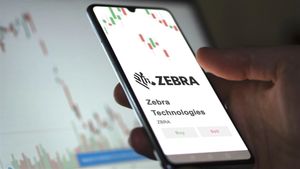– Data from multiple ongoing trials evaluating Vir’s two novel HBV therapies continue to demonstrate substantial reductions in hepatitis B surface antigen (HBsAg) with no new safety signals –
– Preliminary data to-date show that 30.8% of participants receiving 48 weeks of VIR-2218 plus pegylated interferon alpha achieved HBsAg seroclearance with anti-HBs seroconversion by end of treatment –
SAN FRANCISCO, Nov. 06, 2022 (GLOBE NEWSWIRE) -- Vir Biotechnology, Inc. (Nasdaq: VIR) today announced new data from its robust hepatitis B virus (HBV) portfolio aimed at achieving a functional cure. These data, plus health outcomes research, are being presented at the American Association for the Study of Liver Diseases (AASLD) The Liver Meeting® in two oral presentations, both of which were selected for inclusion in the “Best of the Liver Meeting” summary, a poster and a late-breaking poster presentation. The “Best of the Liver Meeting” designation underscores the strength of Vir’s broad hepatitis portfolio, which is addressing both HBV and hepatitis D virus (HDV).
In one oral presentation, new preliminary data from an ongoing Phase 2 trial demonstrated that 30.8% of participants receiving 48 weeks of VIR-2218, an investigational small interfering ribonucleic acid (siRNA), initiated concurrently with pegylated interferon alpha (PEG-IFN-α), achieved HBsAg seroclearance with anti-HBs seroconversion. Additionally, 48 weeks of VIR-2218 plus PEG-IFN-α provided greater reductions in hepatitis B surface antigen (HBsAg) (mean decrease of -2.9 log10 IU/mL) compared to VIR-2218 alone or with shorter regimens of the combination. No new safety signals were identified.
“These new preliminary data demonstrate that VIR-2218 can be potentiated by immunomodulating agents such as pegylated interferon to achieve meaningful HBsAg loss,” said Professor Man-Fung Yuen, D.Sc., M.D., Ph.D., chief of division of gastroenterology and hepatology, The University of Hong Kong, Li Shu Fan Medical Foundation professor in medicine. “The higher rates of HBsAg seroclearance with anti-HBs seroconversion by the end of the 48-week treatment could be indicative of the potential for this regimen to serve as a curative chronic HBV treatment with a finite duration.”
In a separate oral presentation, new results from Part A of the Phase 2 MARCH (Monoclonal Antibody siRNA Combination against Hepatitis B) trial, including all three cohorts, demonstrated a mean HBsAg reduction of >2.5 log10 IU/mL. These data showed that VIR-2218 and VIR-3434, an investigational HBsAg-targeting monoclonal antibody engineered to potentially act as a therapeutic vaccine, are additive in reducing HBsAg. The combination of VIR-2218 and VIR-3434 through up to 20 weeks of treatment in Part A was generally well tolerated. Combining the learnings from the VIR-2218 plus PEG-IFN-α trial with these encouraging new results have led to additional cohorts evaluating the triple combination of VIR-2218, VIR-3434 and PEG-IFN-α being added to Part B of the MARCH trial. Initial data from Part B are expected in the second half of 2023.
Additionally, Phase 1 data presented as a poster demonstrated that a single 75 mg or 300 mg dose of VIR-3434 resulted in rapid reductions in HBsAg and HBV DNA in the majority of viremic participants with chronic HBV infection in the absence of nucleot(s)ide reverse transcriptase inhibitor (NRTI) therapy. Finally, a real-world analysis of 20 years of medical records in the U.S., to be highlighted in a late-breaking poster presentation, revealed that the majority of people with chronic HBV infection remained untreated throughout the study period.
“The new data from our ongoing therapeutic combination trials continues to support our strategy of combining an antiviral with an immunomodulator and we believe are encouraging steps forward in our pursuit of developing a functional cure for the approximately 300 million people living with chronic HBV,” said Carey Hwang, M.D., Ph.D., Vir’s senior vice president, clinical research, head of chronic infection. “We are excited by these data, which are important milestones in the development of our novel HBV compounds VIR-2218 and VIR-3434. We look forward to reporting additional clinical data from one of Vir’s most advanced development programs in 2023.”
Summary of AASLD 2022 Presentations
Oral Presentation – VIR-2218 in Combination with PEG-IFN-α
Preliminary 48-week safety and efficacy data from novel investigative cohorts of VIR-2218 alone and in combination with PEG-IFN-α in participants with chronic HBV infection demonstrated:
- Longer duration (48 weeks) of VIR-2218 plus PEG-IFN-α treatment achieved higher rates of HBsAg seroclearance with anti-HBs seroconversion by the end of treatment (30.8%, 4/13).
- Participants receiving longer duration of VIR-2218 plus PEG-IFN-α had greatest mean declines from baseline HBsAg (log10 IU/mL) levels at week 48 (2.9 ± 1.36).
- 10 participants receiving VIR-2218 plus PEG-IFN-α achieved HBsAg seroclearance by week 48, and nine achieved anti-HBs levels >10 mIU/mL.
- Most adverse events (AEs) reported were grade 1 or 2 with no discontinuations due to treatment-emergent AEs.
Presenter: Prof. Man-Fung Yuen, D.Sc., M.D., Ph.D., MBBS, Deputy Department Chairperson, Chief of Division of Gastroenterology and Hepatology, Master of Lap-Chee College, The University of Hong Kong, Li Shu Fan Medical Foundation Professor in Medicine (Abstract #33507; Oral #19)
Oral Presentation – VIR-2218 in Combination with VIR-3434
Preliminary data from the ongoing open-label Phase 2 MARCH study evaluating the safety, tolerability and antiviral activity of VIR-2218 in combination with VIR-3434 in virally suppressed participants with chronic HBV infection who received continuous NRTI therapy for two months or more demonstrated:
- VIR-2218 and VIR-3434 combination regimens achieved mean HBsAg reductions >2.5 log10 IU/mL in all cohorts, and absolute HBsAg levels <10 IU/mL were achieved in most participants.
- Patterns of response demonstrated additive HBsAg reduction from the complementary modes of action of VIR-2218 and VIR-3434.
- All AEs were mild to moderate in severity. No AEs led to treatment discontinuation.
Presenter: Prof. Edward Gane, M.D., Professor of Medicine at the University of Auckland, New Zealand, and Chief Hepatologist, Transplant Physician and Deputy Director of the New Zealand Liver Transplant Unit at Auckland City Hospital (Abstract #33496; Oral # 18)
Poster Presentation – VIR-3434
Preliminary data from an ongoing randomized, double-blind, placebo-controlled, Phase 1, single ascending dose study of the safety, tolerability and antiviral activity of VIR-3434 in viremic participants with chronic HBV infection demonstrated:
- Among participants randomly assigned to VIR-3434, mean HBsAg change from baseline at nadir was −1.77 log10 IU/mL and −1.83 log10 IU/mL in the 75 mg and 300 mg groups, respectively.
- Among participants randomly assigned to VIR-3434, mean HBV DNA change from baseline at nadir was −1.40 log10 IU/mL and −2.03 log10 IU/mL in the 75 mg and 300 mg groups, respectively.
- Across both cohorts, 11/12 participants randomly assigned to VIR-3434 achieved a > 1 log10 IU/mL reduction in HBsAg, and 11/12 achieved a > 1 log10 IU/mL reduction in HBV DNA
- All AEs were grade 1 or 2 in severity. No serious AEs or AEs leading to study discontinuation were reported.
Presenter: Kosh Agarwal, M.D., Consultant Hepatologist and Transplant Physician at the Institute of Liver Studies, Kings College Hospital, London (Abstract #36195; Poster #1187)
Late-Breaking Poster Presentation – Real-World Findings of HBV Treatment Patterns
A retrospective, observational analysis using electronic health records from two integrated health care delivery systems in the U.S. from January 1, 2000, to December 31, 2020, compared baseline characteristics for treated (i.e., those receiving at least a 60-day consecutive course of NRTI or interferon alfa) and untreated patients with chronic HBV infection in routine clinical practice. Results showed:
- Of the 3,296 treatment naïve individuals at cohort entry, 842 (25%) were treated after cohort entry and 2,469 (75%) remained untreated for the duration of the study.
- Among treated patients, 95% received an NRTI and 5% received interferon alfa. Treated patients were more likely than treatment naïve patients to be male, older, White, and enrolled in Medicare or Medicaid and more likely to have a higher Fibrosis-4 Index (FIB-4) score, to be HBeAg-positive, and to have lower HBV DNA levels.
Presenter: Sacha Satram, Ph.D., Director, Health Economics & Outcomes Research at Vir Biotechnology (Abstract #38827; Poster #5045)
About Chronic Hepatitis B
Chronic hepatitis B virus (HBV) infection remains an urgent global public health challenge associated with significant morbidity and mortality. Approximately 300 million people around the world are living with HBV, and approximately 900,000 of them die from associated complications each year. These patients are significantly underserved by existing therapies with low functional cure rates, lifelong daily therapy and poor tolerability. Vir is working to achieve a functional cure for the millions of people with HBV around the world through its broad and differentiated portfolio.
About Chronic Hepatitis D
Chronic hepatitis D virus (HDV) infection occurs as a simultaneous co-infection or super-infection with hepatitis B virus (HBV). An estimated 12 million patients globally are infected with HDV, representing approximately 5% of those infected with HBV. HDV-HBV co-infection is considered the most severe form of chronic viral hepatitis due to more rapid progression toward hepatocellular carcinoma and liver-related death.
About VIR-2218
VIR-2218 is an investigational subcutaneously administered HBV-targeting siRNA that has the potential to stimulate an effective immune response and have direct antiviral activity against HBV and HDV. It is the first siRNA in the clinic to include Enhanced Stabilization Chemistry Plus (ESC+) technology to enhance stability and minimize off-target activity, which potentially can result in an increased therapeutic index. VIR-2218 is the first asset in the Company’s collaboration with Alnylam Pharmaceuticals, Inc. to enter clinical trials.
About VIR-3434
VIR-3434 is an investigational subcutaneously administered antibody designed to block entry of HBV and HDV viruses into hepatocytes and to reduce the level of virions and subviral particles in the blood. VIR-3434, which incorporates Xencor’s Xtend™ and other Fc technologies, has been engineered to potentially function as a T cell vaccine against HBV and HDV in infected patients, as well as to have an extended half-life.
About Vir Biotechnology
Vir Biotechnology is a commercial-stage immunology company focused on combining immunologic insights with cutting-edge technologies to treat and prevent serious infectious diseases. Vir has assembled four technology platforms that are designed to stimulate and enhance the immune system by exploiting critical observations of natural immune processes. Its current development pipeline consists of product candidates targeting COVID-19, hepatitis B and hepatitis D viruses, influenza A and human immunodeficiency virus. Vir routinely posts information that may be important to investors on its website.
Forward-Looking Statements
This press release contains forward-looking statements within the meaning of the Private Securities Litigation Reform Act of 1995. Words such as “may,” “will,” “plan,” “potential,” “aim,” “expect,” “anticipate,” “promising” and similar expressions (as well as other words or expressions referencing future events, conditions or circumstances) are intended to identify forward-looking statements. These forward-looking statements are based on Vir’s expectations and assumptions as of the date of this press release. Forward-looking statements contained in this press release include, but are not limited to, statements regarding Vir’s strategy and plans; the potential clinical effects of VIR-2218, VIR-3434, VIR-2218 in combination with VIR-3434 and VIR-2218 in combination with pegylated interferon alfa; the potential benefits, safety and efficacy of VIR-2218, VIR-3434, VIR-2218 in combination with VIR-3434 and VIR-2218 in combination with pegylated interferon alfa; the preliminary data of VIR-2218 in combination with pegylated interferon alfa; the initial results of the MARCH trial; Vir’s plans and expectations for its HBV portfolio; and risks and uncertainties associated with drug development and commercialization. Many important factors may cause differences between current expectations and actual results, including unexpected safety or efficacy data or results observed during clinical trials or in data readouts, including the ongoing clinical trial of VIR-2218 in combination with pegylated interferon alfa, the MARCH trial and the Phase 1 trial of VIR-3434; the occurrence of adverse safety events; risks of unexpected costs, delays or other unexpected hurdles; difficulties in collaborating with other companies; successful development and/or commercialization of alternative product candidates by Vir’s competitors; changes in expected or existing competition; delays in or disruptions to Vir’s business or clinical trials due to the COVID-19 pandemic, geopolitical changes (including the war in Ukraine) or other external factors; and unexpected litigation or other disputes. Drug development and commercialization involve a high degree of risk, and only a small number of research and development programs result in commercialization of a product. Results in early-stage clinical trials may not be indicative of full results or results from later stage or larger scale clinical trials and do not ensure regulatory approval. You should not place undue reliance on these statements, or the scientific data presented. Other factors that may cause actual results to differ from those expressed or implied in the forward-looking statements in this press release are discussed in Vir’s filings with the U.S. Securities and Exchange Commission, including the section titled “Risk Factors” contained therein. Except as required by law, Vir assumes no obligation to update any forward-looking statements contained herein to reflect any change in expectations, even as new information becomes available.

Contact: Carly Scaduto Senior Director, Media Relations cscaduto@vir.bio +1-314-368-5189






